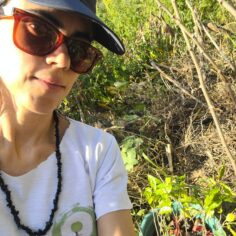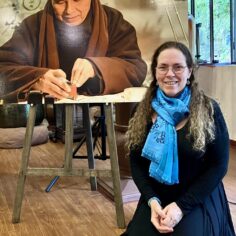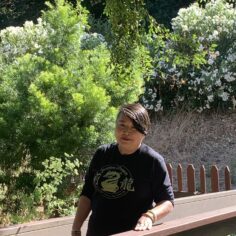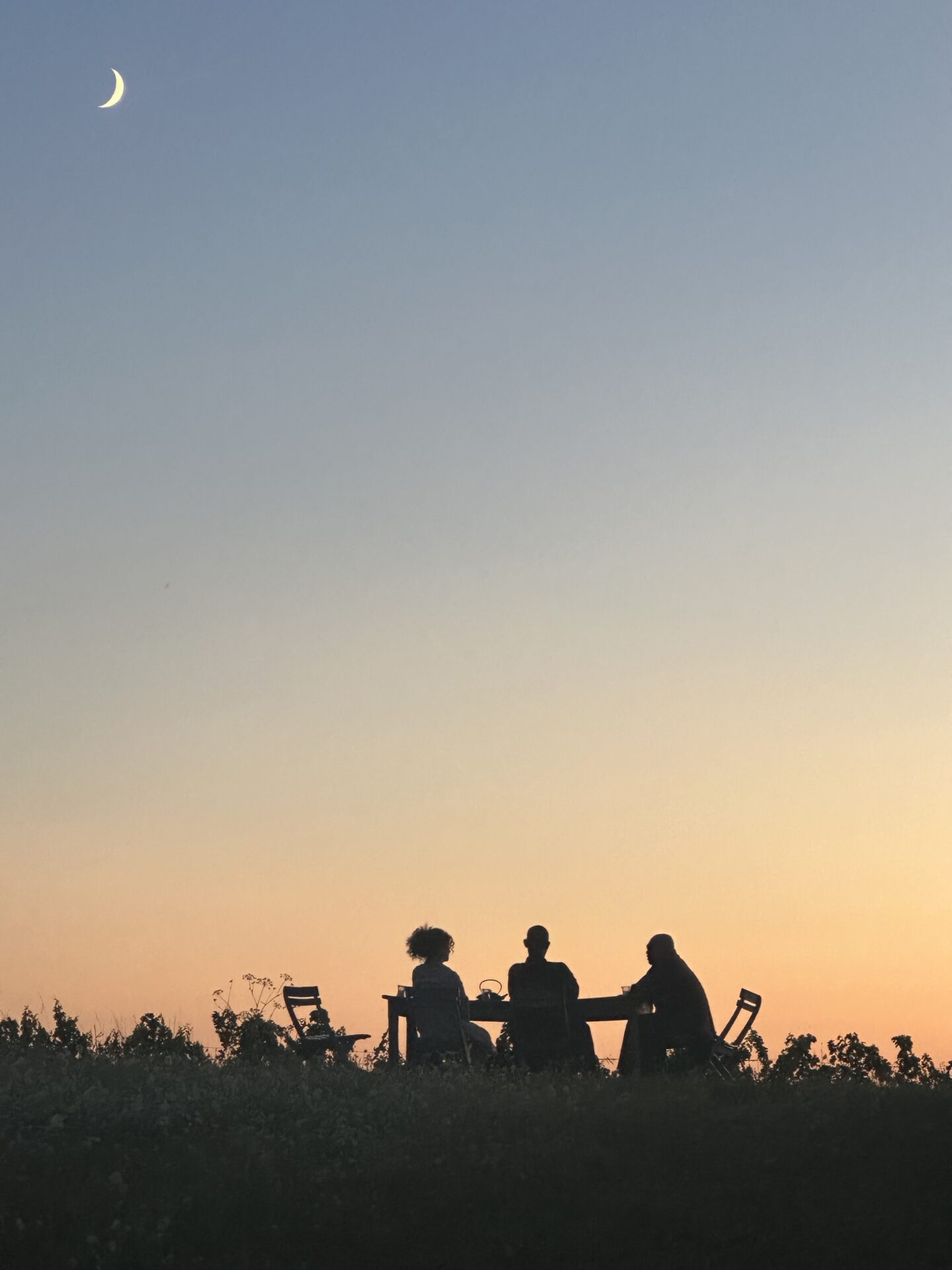Earth Holder Community Care-Taking Council members share their experiences on growing love and understanding in fractious times.
By Maíra Fernandes de Melo, Dr. Magda De La Paz Cabrero, Kat Liu on
This Suffering Is Not Me: The Diamond That Cuts Through Illusions and the Avataṃsaka Realm
by Magda Cabrero
I have recently met many people deeply impacted by the actions of the new administration in the United States government.
Earth Holder Community Care-Taking Council members share their experiences on growing love and understanding in fractious times.
By Maíra Fernandes de Melo, Dr. Magda De La Paz Cabrero, Kat Liu on
This Suffering Is Not Me: The Diamond That Cuts Through Illusions and the Avataṃsaka Realm
by Magda Cabrero
I have recently met many people deeply impacted by the actions of the new administration in the United States government. Many of us internalize not only our personal suffering but also the suffering around us. Some feel profoundly alone in their pain, believing it to be permanent. I, too, know what it is to feel unable to detach from suffering—to feel as if I were one with it.
We often find ourselves trapped in mental loops that reinforce the illusion of permanent suffering. Recognizing the deeper reality of interbeing helps us release our attachment to it.
Beginning each day with gratitude and reminding myself this suffering is not me continues to support my efforts to let go of ego and experience the profound emptiness of the self.
I have experienced this firsthand. After the recent election, I found myself identifying deeply with the suffering of marginalized children and youth. It was an echo of the despair I witnessed when President Trump was first elected in 2016—like an old wound reopening. For weeks, I felt unable to detach from this suffering.
Through meditation and mindful collaboration with others, including my sangha’s Engaged Buddhism group, I learned to loosen my clinging and transform this energy into compassionate action. Beginning each day with gratitude and reminding myself this suffering is not me continues to support my efforts to let go of ego and experience the profound emptiness of the self.
As Thầy explains, this emptiness is not nihilism; it is freedom from the illusion of a fixed identity. To be empty is to be free—free from false notions of self, from attachment, and from suffering. Nonself is an embrace of impermanence: no birth, no death. To stay true to my path, I must move beyond my attachment to suffering and cultivate a broader, more liberating perspective.
I am learning to let the diamond cut through the illusion that suffering defines me. More clearly than ever, I see how suffering is bound to my deep-seated belief in a separate self, ingrained since childhood. But nothing exists in isolation—there is no separate self, only interbeing.
Through meditation, suffering transforms into compassion, for both ourselves and others. When my suffering felt unbearable, simply sharing it lightened the burden, helping me see that we ultimately belong to each other.
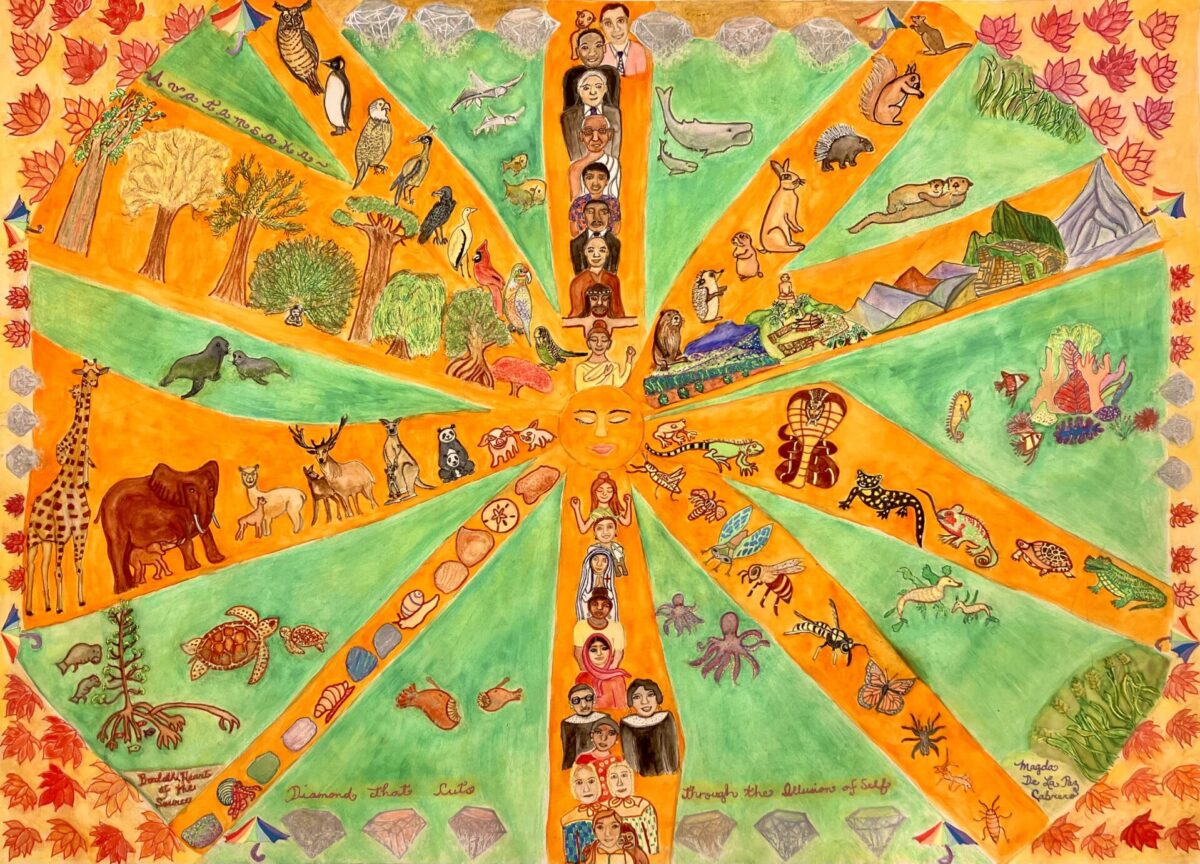
The role of the sangha in healing and transformation
At a recent retreat with the Opening Heart Mindfulness Community, we reflected on Thầy’s teachings on Kṣitigarbha, a revered bodhisattva in East Asian Buddhism known for their deep compassion for all sentient life and their vow to guide beings in the hell realms to a better rebirth. Many find inspiration in this bodhisattva, especially during these challenging times.
Just as Kṣitigarbha took refuge in the sangha, Thầy views the sangha as a refuge for individuals, recognizing the immense burden they carry. Sanghas must be places of support and nourishment for those who tirelessly help others, places where they can rest and restore themselves.
Suffering intensifies when we isolate ourselves; in solitude, we can forget that suffering is universal. Thầy urges us to find a sangha, which he calls Maitreya, the Buddha of Love. The Sangha nurtures mindfulness and peace; it sustains bodhicitta, the awakened heart-mind. By offering community, sangha gives us a chance to heal.
During this time of despair for many, I have witnessed people come together to support one another and engage in meaningful action. I see our sangha as a sign of hope.
Personally, I have felt very supported as a sangha member. I know I am not alone in my suffering, and I feel safe expressing it in a space held with confidentiality and compassion. Recently, the head of our sangha reached out to me directly to offer her support, which made me feel truly seen and cared for. Many of our meditations and Dharma topics have centered on themes such as No Mud, No Lotus, offering both comfort and insight during challenging times. During Dharma sharing, several members have expressed how much support they have received from the sangha, and how relieved they feel knowing that it is always there for them as a refuge.
Being able to attend my Opening Heart Mindfulness Community sangha regularly—sometimes as often as three times a week—and to be surrounded by many members who aspire to follow Thầy’s teachings and The Five Mindfulness Trainings gives me a deep sense of belonging and safety. Moreover, as an Earth Holder and a member of One Earth Sangha, I feel a strong kinship with others who share my concerns for the environment and social justice. We seem to speak the same language and share the same heart. I don’t feel alone in my suffering for the world.
One particularly meaningful effort has been the work of our sangha’s Engaged Mindfulness group, of which I am a part. We came together with a shared intention to find ways to support immigrants and the LGBTQ+ community, and we presented our reflections and resources to the larger sangha. This information is now permanently available on our website, www.openingheartmindfulness.org, and individuals and groups within our community are choosing to take part in these efforts. These endeavors have helped me transform my suffering into meaningful action. Rather than dwell in the pain I perceive in myself and in the world, I now channel my energy into mindful engagement and service.
Reflecting on how Thích Nhất Hạnh engaged with the world to relieve suffering and share his peace, I feel deeply inspired to do the same. I have discovered meaningful ways to take mindful and compassionate action in the world. When I feel tired or overwhelmed by suffering, I know I can return to my practice and to the sangha as a place of refuge. The practice not only helps me find the island within myself, but also offers a place of solace, compassion, and understanding—a place where I can truly rest, hand in hand with people who share my values and are committed to easing suffering through mindful, loving action.
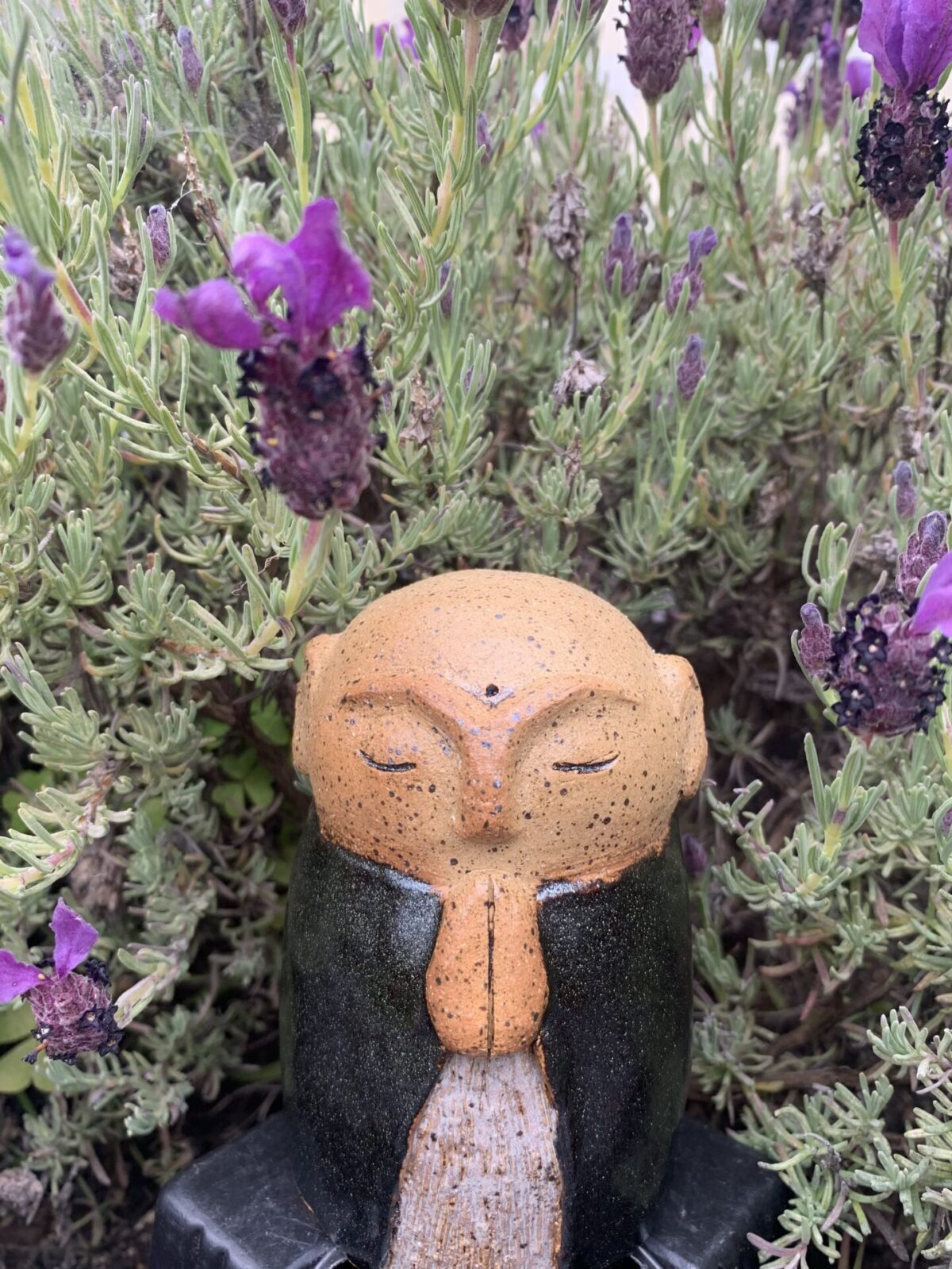
Are You Sure?
by Kat Liu
Not long ago, I had breakfast with someone I know from activist circles, someone with whom I’ve been friendly but do not often speak. Instead, most of our interactions lately have been via posts and comments on social media. The impression that I had of this person was that they ran with a clique of people who are deeply and passionately committed to social justice, angry over the many injustices in our nation and world, and so committed and angry that they are unable to see the humanity of those who actively (or passively) perpetuate these injustices.
However, as we conversed face to face over a shared meal, it became ever clearer to me that the impression I had been holding of this person in my mind was inaccurate, distorted. I realized that the person sitting across from me actually had a much more nuanced and compassionate view of the so-called “other side” than I thought. This realization made me smile to myself as I recognized that I was doing the same thing others have done to me—seeing one aspect of a person, the aspect that shows up in social media posts and at protests and rallies, and thinking that is all there is to the person.
The realization that someone I know was actually much less angry and intransigent than I had thought made me wonder how many other people I might have misjudged, including people whom I may feel at political odds with.
Although my conversational partner is not Buddhist and probably would not describe it this way, we talked over breakfast about the recognition that everyone’s beliefs and actions are the results of many causes and conditions in which they were raised and continue to exist. For example, a person who grew up being taught that humans have dominion over the earth will more likely believe that to be true, whereas someone who grew up being taught that we are all part of an interdependent web of existence will more likely see the world that way. While the first person’s views may cause harm to Mother Earth and our sibling animals, plants, and minerals, the person isn’t inherently inferior; nor is the second person inherently better. For those of us who seek to make our communities and world more equitable, such judgements of inferiority and superiority can be tempting but are generally unhelpful and unskillful. Instead, we need to meet each person with compassion, seek to understand the causes and conditions that lead to certain beliefs and actions, and where it is possible and beneficial to try to change those conditions.
The realization that someone I know was actually much less angry and intransigent than I had thought made me wonder how many other people I might have misjudged, including people whom I may feel at political odds with. This is not to say there aren’t real divisions between people—divisions that have serious consequences for the well-being of marginalized peoples, our sibling species, and Mother Earth—but those divisions may not be as big as they appear, and therefore not as insurmountable either. The conversation was like a mindfulness bell, reminding me that what I perceive may not be all there is, and to try to remain curious and open.
How to Live Together
by Maíra Fernandes de Melo
Our current worldviews tend to divide us into not only two sides, but also a few more. From a binary perspective, there are those of us who are against (someone/something) and those in favor. Beyond this, there are also those in favor of not being against something, people against being in favor of anything, and some of us trying to find some fun in this confusing and endless circle of being right and wrong.
No matter how open we think we are or how free we think we are from our wrong perceptions, they are always waiting in the corner for an unaware moment. I remember a Dharma talk given by Sister Eleni during the 2023-2024 Rains Retreat in Plum Village, France. She mentioned a cartoon about many parts of an elephant and talked about the thousand ways of not really seeing the elephant in the room.
Sanghas are a safe space where we can “test” our ability to coexist with—and even love—those who think differently from us. “How come you are a Plum Village practitioner and support this one or that one?” I sometimes think to myself. “This doesn’t make any sense, you haven’t understood the teachings!” When I notice these thoughts, I have to laugh at myself. The time between thinking and laughing has become shorter and shorter—a sign I’m evolving in the practice! But we “train” in sanghas to build community and connection wherever we go, not only in safe spaces.
Recently, I had the opportunity to work on a partnership project between a research institute and a conservative Christian church designing an online course about climate change for their youth. Having been working on interfaith dialogue for a while now, I know some dogmas are undiscussable and yet some peace is possible. Working together daily to design the course helped me see that “they” are not as judgmental as “we” usually think “they” are. (Who’s the judgmental one here?)
I still have a side: I still believe that whatever god is, It is not worried about the gender of my love as much as the quality of it. Though the people I collaborated with are probably not going to become my best friends, it was interesting to see that they are not only nice people but also interested in science—“who would imagine?!” says my prejudice.
Peace is the ability to sustain divergency, accepting that although we do have many differences (thanks to biodiversity), that doesn’t mean we should want to annihilate the other. Are we up to this? Or do we want to live with “our” people, “our” friends, “our” team? Coming from a country where soccer is a national identity, I’ve seen the team thing create bonds and generate marriages as well as dismantle families and kill people. As the Martinican philosopher Édouard Glissant says, identity is constructed in relation—and so is oppression. How can we foster and engage in relationships with those who think, speak, and act so differently from us, even if their actions are complete opposites of our own—and even if they are ultimately threatening our lives?
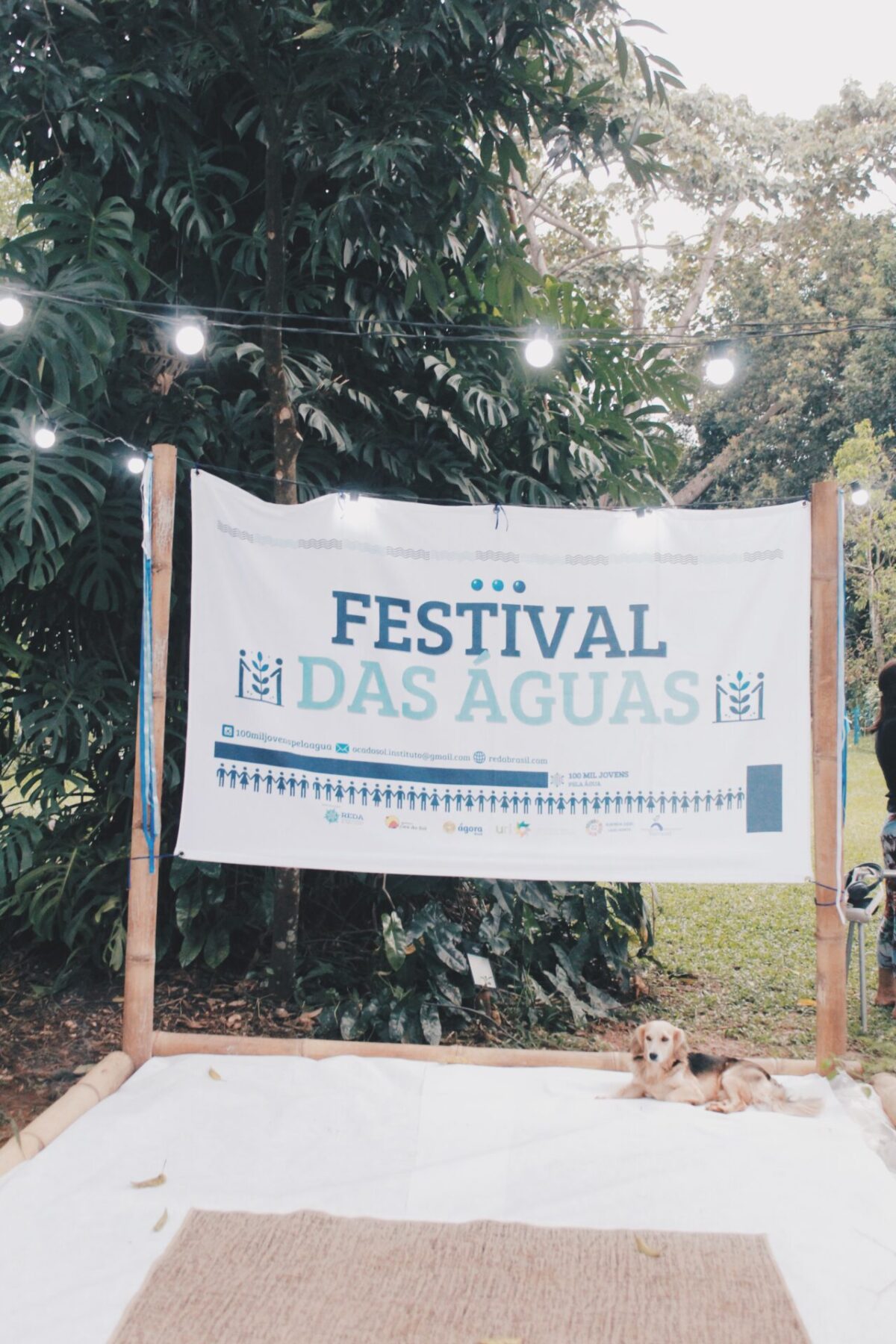
Is it possible to generate moments of joy in such hard times?
On Water Day, the activist movement I’m part of (a kind of interfaith Wake Up Water group full of wonderful people who work at the intersection of spiritual and environmental activism) came together to host a water festival in the capital of Brazil. We planned the program with love and care. Since it was a youth-focused event, we didn’t want it to be sad or boring. We had round tables and serious discussions about the worsening state of water in the country, but we also invited many people to present already-existent solutions, including social technologies in progress all over the country, and to address diverse water-related issues. We had playful activities, artistic performances, rituals and ceremonies from different spiritualities, artisans offering beautiful crafts, good music, good food, and lots of bonding and connecting. Everyone who attended—including us, the coordinators—left feeling gratitude for life, for people, and for Water.
The most beautiful part was testimony of one of the young indigenous boys who attended the event; it warmed my heart. On the last day, asked if he had liked the festival, he said, “We are used to attending many environmental events, but we always listen and talk about violence, about genocide, about death. What I liked the most is that here we haven’t heard about it even once. It was all joy, love, and beauty. It was nourishing and refreshing!”
I then remembered a class on the fifty verses Sister Clear Grace (today Venerable Clear Grace Dayananda) gave.* Something they said stuck with me: “If we want the tug of war to end, we have to drop the rope.” But how can I drop the fear that if I put the rope down, “they” will come and get me—even kill me? The Plum Village practice keeps teaching me that it is not only a matter of dropping the rope, but also of starting to play different games—having fun in different ways and enjoying the kindergarten of life from new perspectives.
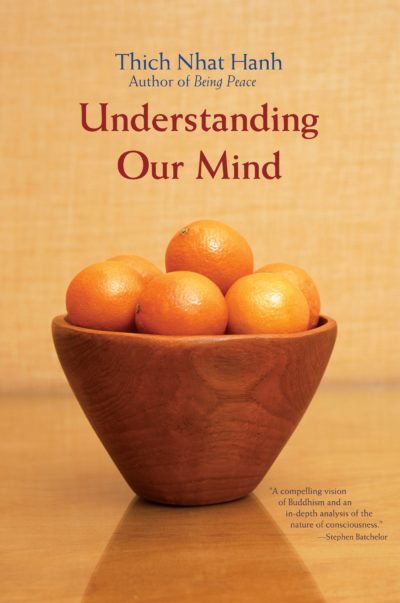
* Thích Nhất Hạnh, Understanding Our Mind (Berkeley: Parallax Press, 2002)
